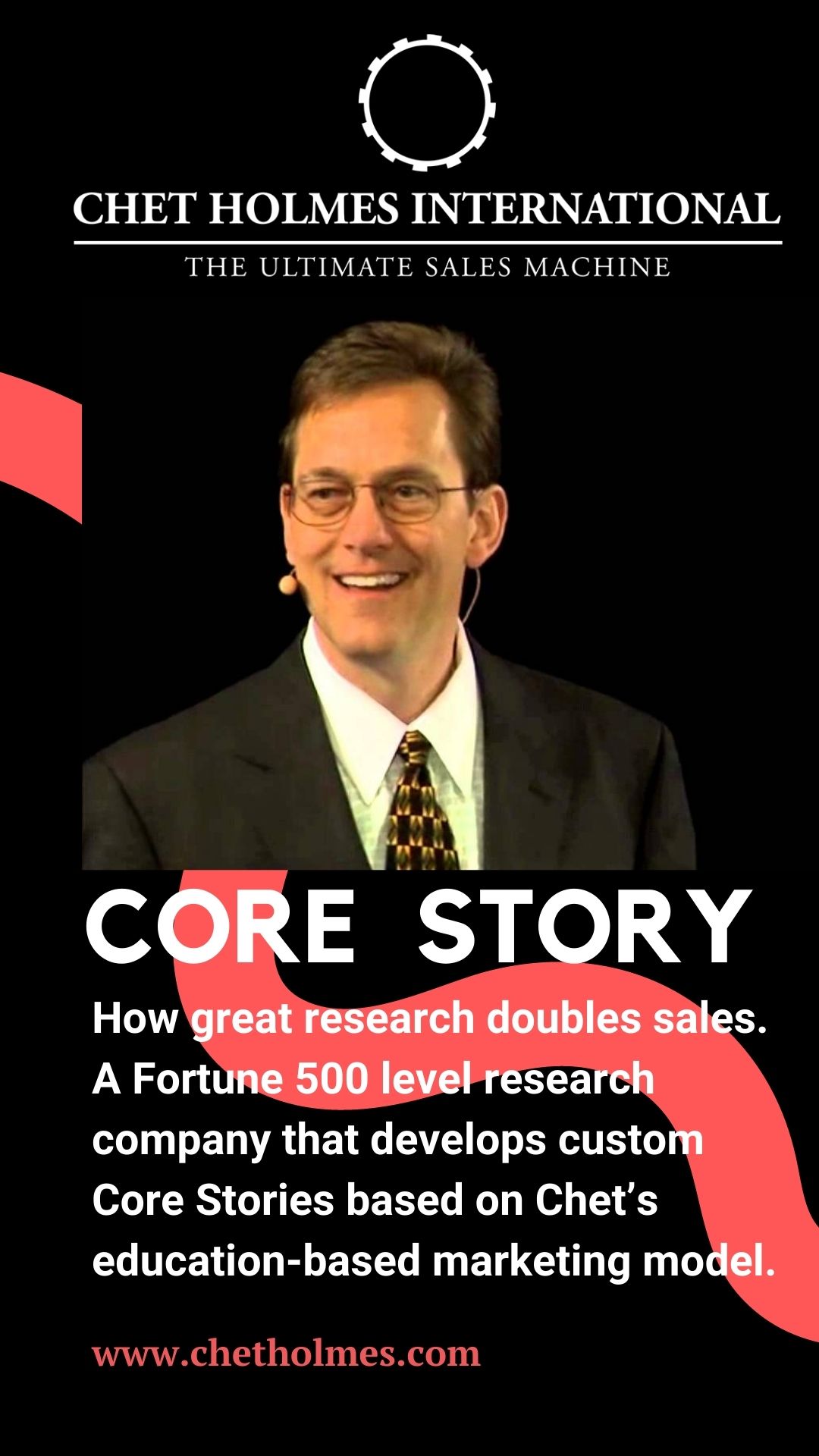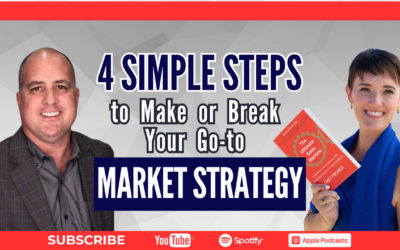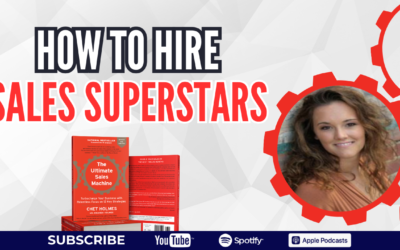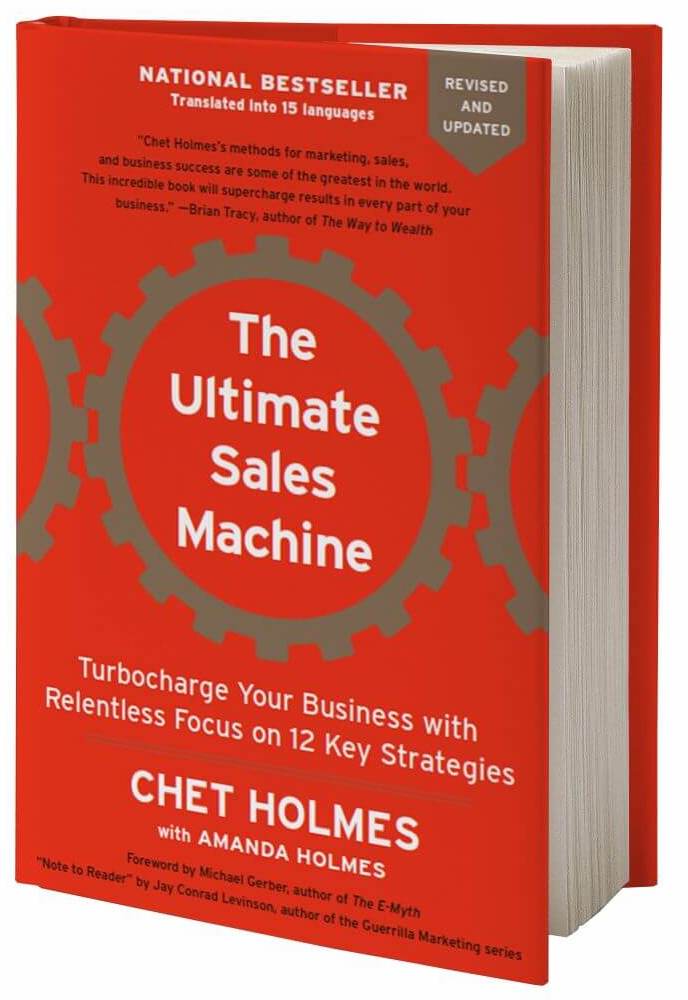Mark Moss is a serial entrepreneur turned wealth expert with over 300k subscribers who sold seven million-plus businesses.
In this episode, we talk about:
- How you can build, grow, and protect your wealth,
- Making your money work for you,
- Bitcoin, technological revolution, and its impact on humanity,
- How you can beat the YouTube algorithm,
- And many more!
- Want to know what’s keeping you from doubling your sales in the next 12 months? Take our quick QUIZ to get answers: Howtodoublesales.com
- If you’d like to have a profound breakthrough in your business, schedule your breakthrough call with a LIVE expert here: Chetholmes.com/Breakthrough
- Claim your FREE chapter 4 from the top 10 most recommended marketing and sales books of all time! Visit: Ultimatesalesmachine.com to find out how you Create 9X More Impact from every move you’re already making to win clients!
Amanda Holmes: Amanda Holmes here, CEO of Chet Holmes International. I am so happy to have fallen into the hands of Mark Moss here. Who has – how many viewers do you have on your podcast?
Mark Moss: 300,000 subscribers. I get about almost million and a half views listeners this month.
Amanda Holmes: oh my gosh. And then a whole background of business. So you’ve, you’ve bought and sold over a hundred properties.
Sold multiple companies for seven figures, to fortune 500. I’m just learning this. As I’m sitting down with him, he said, “Oh yeah, I’ve heard those radio ads from Chet Holmes.” I love it. I love it. So all of these people want to know what are the biggest myths around generating wealth. Can you share?
Mark Moss: Yeah. Well, so the first thing I’d say is I like to think about money three different ways.
So the first thing I want to do is we want to think about wealth creation. So how do we create wealth? How do we make money? The second thing is how do we accumulate wealth accumulations? How do I make my money make more money? And then the third way is how do I protect my money? Now, if you haven’t made money than the thought of having to protect, it doesn’t seem right.
But the reality is keeping money is way harder than it is to make it. So I’d break it into those three categories. As far as creating wealth, I think probably one of the biggest missing understandings is that we get paid for the value we provide. And that’s it. And so we have to think about providing value first.
And so a lot of times people come into business or sales and they want to sell something that they want to sell. My friend made this, I made this, I have this idea for this. I really love this, but it’s not about you. It’s not about what you want, it’s what other people want. And it’s the value that you can provide to them.
And so, you know, especially this is wrong at the lower end level, you know, people fighting over minimum wage jobs and whatnot where it’s like, they want to get paid more, but paid more for what? For providing the same value? And so if you want to make more money, you have to provide more value. And so a lot of people need to invest in themselves first, so they can learn to provide more value, increase your skills and things like that.
And so if I can provide more value to you and then find a way to provide more value to that person but more people. So that’s really the game. And we can see this easily with, you know, Bill Gates, for example, right? He took personal computers and gave them to everybody in the world. So massive value to lots of people versus a heart surgeon who may give massive value to you. He saved your life, but it’s one person.
Amanda Holmes: Fair enough. Wow. And then the second one?
Mark Moss: So that’s creative value. And so then adding value or growing your value, growing your wealth. So the second piece would be a wealth accumulation. So then once we make our money, then we want our money to be growing and making more money.
So I like to say that I’ve worked really hard for my money and I want my money to be working just as hard for me.
Amanda Holmes: I love that.
Mark Moss: Right. And so you might hear, you know, Warren Buffet talk about, you’ll be broke until the day you die unless you can make money while you sleep. And so that’s your money-making money.
And so then how do you think about – I like to think about my money goes where it’s treated best. So like where’s the treated best? Is it, is it treated best in the bank where it’s losing in the last year about 25% of its purchasing power because of inflation and the bank is paying me 0.01% interest. Well, that’s not very good.
So I could put it into a piece of real estate and make two or 3% on my money. Right. I could put in a stocks. And so you’re trying to figure out where can my money go to maintain its purchasing power. Ultimately, we want it to grow its purchasing power.
Amanda Holmes: Of course and you were telling me just now that you also do Bitcoin as well.
Mark Moss: Yeah. I think – so I’ve been making content about Bitcoin since about 2015. So about whatever that is six years at this point. I believe still even today, which a lot of people think maybe they’ve missed the boat if they’ve heard it. But I still believe today it’s the single best investment opportunity even today that anybody in our lifetime has ever seen and will probably ever see. What happens is if you look through history about every 50 years, there’s a technological revolution.
So I’m not talking about new technology, like an iPhone is new technology, internet is new technology. I’m talking about a revolution. Literally changes the course of humanity. So there’s been five. So in the 1700s, we had the Industrial Revolution, took people from the farms and the cottage industry and took them into cities, to factories.
Then we had steam engines and steel. So, we had horsepower and manpower. And now we had steam engines and we had steel instead of two, three story brick buildings. Now we can build skyscrapers and bridges of changed humanity. About 50 years later, we had electricity. Changed humanity, right?
Not only did we go from candles to electric light but I mean, we can charge batteries. Everything we do today is based off electricity. Fast forward in about another 50 years, we had oil and automobiles. All of humanity, people walked over the horses. Now we had cars, we could transport food, et cetera.
Fast forward, 1971 was the age of the microprocessor, which gave us personal computers, which gave us the Internet, telecommunications – changed humanity. 1971 plus 50 years puts us 2021 and we’re witnessing another technological revolution that will change humanity. And that’s where we’re sitting today. And that’s why it’s that big of an opportunity.
Amanda Holmes: I think it was also interesting. We just recently did some data on this.
For 50 years, we only had the change between radio and television. So it took, 38 years to get to 50 million users on radio and then 13 years to get to 50 million on television. And then in the last 10 years. Oh my gosh. Right? The Internet, it took four years and Facebook, it took two years to get the 50 million years or so it follows your same model. That’s so fascinating.
Mark Moss: Yeah. So you look at the – that’s kind of what’s going to the adoption rate. And so typically we’d look at not the amount of users cause like Facebook is global. So it’s a little bit different than like a phone company that might just be in the United States. But you would look at the penetration or the percentage of adoption.
And so typically you look at the time that takes to reach about 80%. That’s kind of the number. And so each technology typically has a much faster adoption rate in the next, because they kind of build on to each other. So for example, in the.com boom, in the late 90s, I was old enough. I was just young, but we were trading these crazy things called internet stocks.
Nobody knew about those, but we didn’t have this to trade them with. Today, people do it with cryptocurrencies or on Robinhood doing options or whatever, but they can do it from the phone, but we didn’t have it back then, so that adoption’s quicker.
But if we look at that using an S curve, we can project how fast the technology could be adopted. And we can use this for all types of metrics. So for example, the time it takes to go from zero to 10% adoption is typically the same time it would go from 10 to 90. So if we look at Bitcoin, Bitcoin reached 10% adoption within 10 years, which means then use an S-curve analysis. Then we should expect to get to 90% by the year 2030. Another 10 years.
Amanda Holmes: Wow. That is so fascinating. I want to shift a bit because also it’s so fascinating how you’ve gotten so much knowledge and then now you’re sharing it as well. And I have a lot of people in my industry that are experts at what they do, but they haven’t gotten to that point of how do I put it online?
Can you share a little bit about that journey?
Mark Moss: I think, you know, when it comes to learning, first of all, I didn’t go to college. I didn’t want to go to college because I didn’t care about learning what they wanted me to learn, but that doesn’t mean I don’t love to learn. I love to learn. I’m consuming content left and right. And I think there’s a few different ways that you learn, right?
So one is to learn the information, to take the information in, but the second step is you have to do something with it. And so if I use that knowledge, then I have a better understanding and the third level would be to teach it. And so typically, you know, high-performers would typically be mentoring and being mentored at the same time. Right. So I’m learning, I’m doing, and I’m teaching.
And so about six years ago, you know, after kind of getting my butt kicked in a great financial crash, I was really good at making money. But I didn’t understand this financial casino and it cost me dearly.
So I had to figure that out. I spent years and years and years figuring that out. And as I started to kind of peel back these layers and understand it, I just, man, I need to, I need to tell everybody about it. I need to just, I need to like help everybody out. And so, yeah, I’ve just been creating content and, it is kind of funny because I didn’t want to at first and my old business partner forced me to go on YouTube with them. Like literally, like, you’re my business partner. Like we’re going to have serious problems if you don’t at least come on my channel and do content with me. And he kind of forced me into it. But now it’s been amazing. It’s, um, one it’s made me really understand my subject matter better because I have to go teach it.
But even more than that, like today, over 5,000 comments a week. And a lot of people calling me out, you know, I go, you’re an idiot, whatever. And so you have to get really good at your argument. It’s forced me to go back and learn the other sides of the argument even better because I need to be confident enough to back up my position.
So it’s really helped me to get a better understanding of things. And then it’s just, it’s been awesome just to get all the comments of people’s lives and perspectives that have changed along the way. So it’s been pretty good.
Amanda Holmes: And you said something earlier about if you post every day, it’ll be worth it, or do you really share every day?
Mark Moss: What I was saying is – I was kind of repeating what Russell Brunson says to what the ClickFunnels event and Russell Brunson says. He said, I believe he said I’ll guarantee you something to that effect, if you were to post every single day for one year, you would never have to worry about money again.
Steven Larsen who’s his right-hand man said the same thing, if I had to start over, I’d just started publishing. Brendon Burchard, same thing, Myron Golden, same thing last night, he said, you all want to sell your products, but the FBI and CIA couldn’t even find you. Put your content out there. Right. So they’re all kind of saying the same thing. And I can tell you from firsthand experience. Yes. Within the first year of putting my content on YouTube and then just casually mentioning that I had a product once in awhile generated over seven figures with no ads, no dollar spent just because I was putting content out.
It’s kinda like the way, and now it’s grown to a point where, my idols, my mentors from books have reached out to me and invited me to take part of things they’re doing.
Amanda Holmes: Robert Kiyosaki. We all love Robert Kiyosaki.
Mark Moss: So Robert Kiyosaki’s become a good friend. And what it is, is it’s about putting out your message like a lighthouse.
And actually it was two years ago at this event, Russell Brunson was on stage and he was like pulling up his phone and showing how he was doing direct messages. I think maybe it was Prince Ea who was coming on and he’s like, look at my text message thread or my direct message thread.
And Prince said “Oh Russell, I’m a big fan.” And Russell was like, “What? You’re a big fan.” And like, “I’m a big fan. That’s so weird.” And I sat there going, how would anybody ever say they were a big fan of mine? If I wasn’t putting out content. And so you have to like, it’s a lighthouse, right? I’m putting my content out there and it brings the boats in.
And so that’s, that’s really the path. And, yeah, firsthand, I can say it’s worked really well. And besides the quantifiable number of revenue that it’s made me, the connections that it’s made me, the doors that have opened from it are unquantifiable and it’s been great.
Amanda Holmes: Did you study a lot about the YouTube algorithms or how did you go about posting content?
Mark Moss: Yeah. So, I guess I’m kind of a growth hacker. I think, I think I’ve had seven businesses that have been to seven or eight figures within 12 months. I’ve tried to hack everything. Everything’s always about compressing time. I mean, you read a book like this to compress time, right?
And so everything I’m doing, I want to have the best technique, the best strategies to compress that time. So, if it’s YouTube or whatever it is, I’m going to try to figure that algorithm out. And so it’s not that hard. It’s not rocket science, but of course having that right technique makes a big difference.
Amanda Holmes: Do you have a little, just one little gem on that? Like when you’re posting on YouTube, here’s one little thing that’ll help you get more.
Mark Moss: The first thing I’d say just overall is that like, it goes back to actually the first question you asked me – the myths behind building wealth and what I say it’s by the value you provide.
And so every piece of content I ever put out, I ask myself, will this provide value to the person? Is this what I want to do? Or is this what they need to hear? I’ve had people like, Oh, let’s jump on your show and talk. I’m like, what did we talk about? Oh, we’ll just talk. I’m like, no, that won’t provide value. Right?
So the first thing I’d say is over any platform is always think about providing value first on YouTube specifically. It’s just like most other platforms. What does YouTube want? Well, they want people to stay on there and watch content.
So the two things that probably matter the most are one click through rates. If they serve up my video and nobody’s clicking on it, they’re not going to serve it up anymore. If it has a very high click through rate, they’re going to serve it up more.
And then the next part, and this is Google pay-per-click or Facebook ads or whatever. If somebody clicks on it and goes to the video, what’s the bounce rate or on YouTube, it’s what’s the watch time.
Are people watching it.? So if they serve it up and a lot of people click, but then nobody watches the video. So it was clickbait title. Then they would stop serving up. Cause they went their users to have a good experience, but if they get a good click through rate and a good watch time.
So let me tell you that. So I need that click through rate to be at least four and a half percent or better. Typically it should be. My videos are typically 10% in the first couple of days. And then it windows down. The watch time should be at least 50%. Okay. So I would at least start with those numbers. And if you can get the click-through rate and those watch times, then you should be doing pretty good.
Amanda Holmes: So that thumbnail too is pretty important. That picture that they click on.
Mark Moss: The title and the thumbnail. Right? So the title kind of gives them that clickbait title and then the thumbnail might have some description as well. So the two work together.
Amanda Holmes: Okay. I could talk to you about that all day.
Thank you. So how do they find you? How do we find you?
Mark Moss: If you want to check out the YouTube channels, just Mark Moss. Um, so that’s the best way to find me on YouTube and then I’m pretty active on Twitter, which is the number @1markmoss.
Amanda Holmes: 1markmoss. Okay. The number, not O-N-E. Well, there obviously is only one Mark Moss.
That’s wonderful. Thank you so much. I’m so glad that I got to do this.
Mark Moss: Yeah, it’s great. Thank you.





 Get your pre-sale copy of the new edition of The Ultimate Sales Machine! (With special limited time bonuses)
Get your pre-sale copy of the new edition of The Ultimate Sales Machine! (With special limited time bonuses)
0 Comments